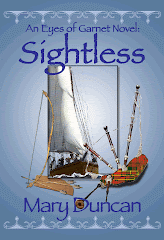To me, there's no better way of sending a reader to 18th century Scotland than by the use of language. Yes, I know, some people are offended by the fact that I have my characters speak similarly to how they would have spoken back then. It does take a little getting used to, but I am rewarded by many more readers who actually appreciate the vernacular. They say it feels like they're there, and they thank me for sending them back in time more authentically.
I have had some agents tell me that to use anything but how we Americans speak is childish. Na bi gòrach! (Don't be daft!) They go on to say that the American public isn't intelligent enough to follow along, and will not read further into the story if they are made to work a little. Shame on them for not giving the public enough credit to want to learn something new. I wonder if that's why Diana Gabaldon is a world-wide best-selling author with literally millions of ardent fans. Me included! That many people can't be wrong.
I do go a step further than Diana by putting a glossary of gàidhlig terms and how to pronounce them in my books. There's no way to please everyone, so all I can hope for is that some of you appreciate the fact that I write for ALL the senses. And just for the record, the way gàidhlig (pronounced gaah-lic) is spelled here is Scottish. Gaelic is the Irish spelling. Two different languages, but with many similarities, though I'd not care to be in a pub differentiating them!
So when you pick up Sightless to read, you will notice different dialects among the Scottish vernacular. For instance, Glaswegians (those folks from Glasgow) have much more of an accent than Highlanders, whose first language was gàidhlig, and English was their second. Highlanders had a softer brogue. Anyway, I hope this helps you to understand my thought process.
Tuesday, January 22, 2008
Subscribe to:
Post Comments (Atom)





No comments:
Post a Comment